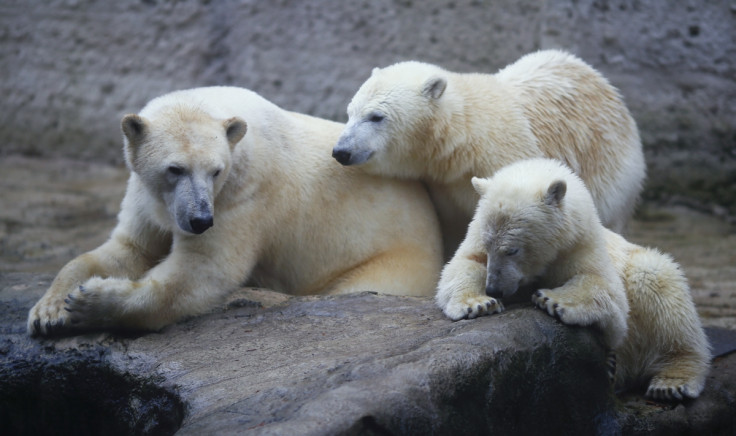Climate change 'single most important threat' to polar bears, experts warn

A re-assessment of the status of polar bears by the International Union for Conservation of Nature (IUCN) has warned climate change is the "most serious threat to polar bear survival". Effects on polar bear habitat from climate change is predicted to cause a 30% drop in their population in the next 35 - 40 years, the report says.
The status of polar bears will stay as 'vulnerable' on the IUCN Red List - one of the world's most comprehensive lists of the conservation status of different animals.
Rising temperatures and sea levels caused by climate change mean sea ice which polar bears need to hunt their prey is disappearing each year. The annual ice-free period is expected to reach 5 months in some parts of the Arctic by the mid-21st century - 5 months or more and will cause "extended fasting for the species, which is likely to lead to increased reproductive failure and starvation", according to the report.
IUCN said that recent studies had shown Arctic sea ice declining 14% every decade since 1979, much faster than previously predicted.
"Based on the latest, most robust science, this assessment provides evidence that climate change will continue to seriously threaten polar bear survival in the future," said Inger Andersen, Director General of IUCN.
She added: "Climate change impacts go far beyond this iconic species, and present a threat our planet has never faced before. Governments meeting at the climate summit in Paris later this month will need to go all out to strike a deal strong enough to confront this unprecedented challenge."
Polar bears are not the only animals thought to be under threat from climate change - reports have suggested a third of snow leopard habitat could become uninhabitable because of warming temperatures.
The IUCN did not only have bad news though - Hamilton's Frog, only found naturally on a single rock tumble on Stephens Island, New Zealand have seen their population rise from 300 to 800 thanks to the establishment of a new population on a neighbouring island. The frog's conservation status has since been raised from endangered to vulnerable.
© Copyright IBTimes 2025. All rights reserved.





















